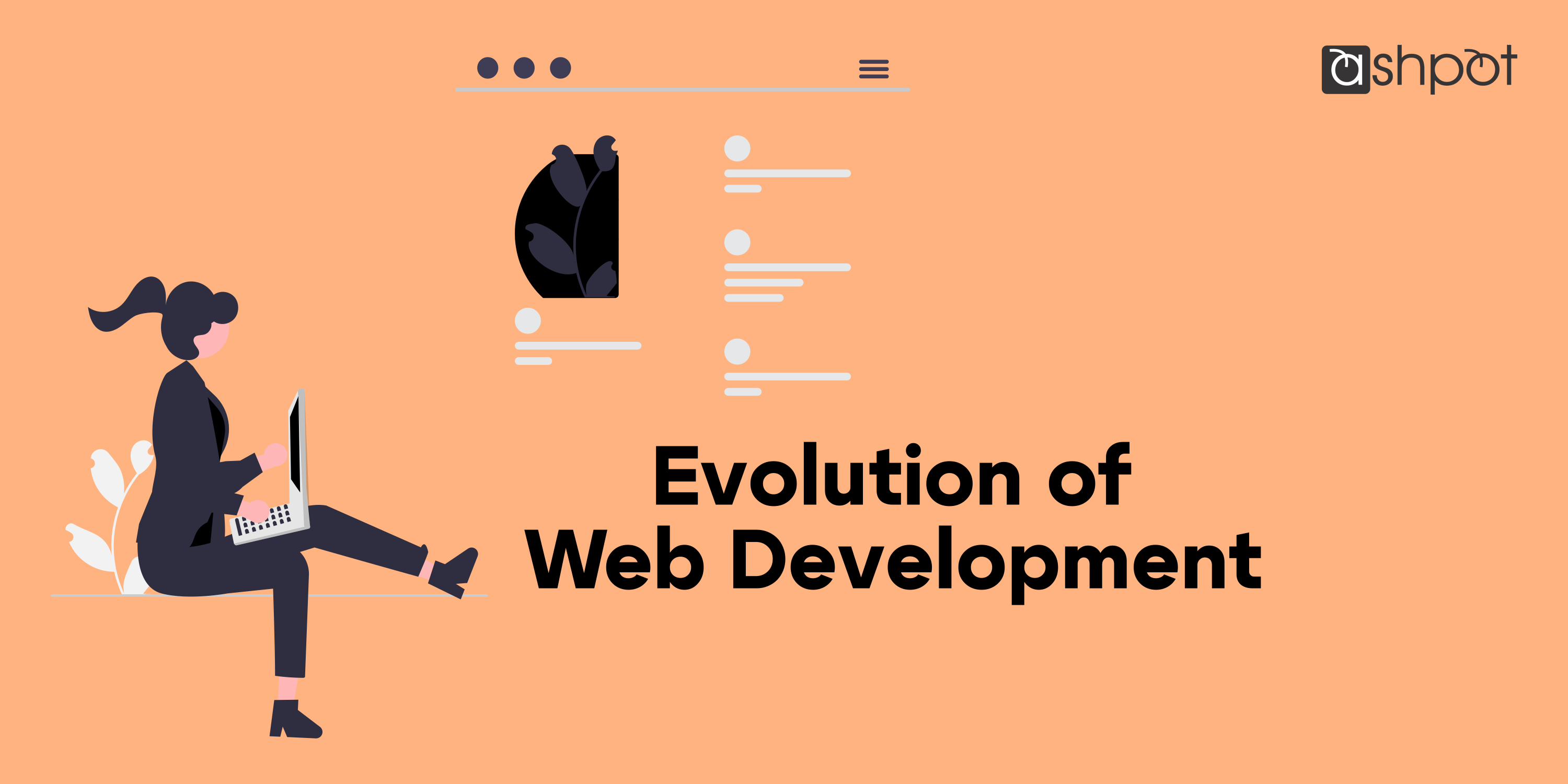Web development has seen a remarkable evolution from its humble beginnings with HTML to the sophisticated Jamstack architecture we have today. Let's take a more detailed journey through the history of web development, highlighting significant milestones and transitions with examples of how they have shaped the web:
The Era of HTML (1990s) In the early 1990s, web development was primarily about creating static web pages using HTML. HTML provided a simple way to structure and display content on the internet. An example of this era is the first-ever website created by Tim Berners-Lee, which was essentially a collection of static HTML pages. Here's a simple HTML page example:
<!DOCTYPE html>
<html>
<head>
<title>My First Web Page</title>
</head>
<body>
<h1>Welcome to My Website</h1>
<p>This is a simple HTML page.</p>
<img src="my-image.jpg" alt="My Image">
</body>
</html>
Introduction of CSS (Late 1990s) As the web continued to grow, the need for better styling and layout control became evident. Cascading Style Sheets (CSS) were introduced, allowing web developers to separate content from design. An example is the use of CSS to transform a basic HTML page into a visually appealing and well-structured website with custom fonts, colors, and layouts.Here's an example of CSS styling an HTML document:
<!DOCTYPE html>
<html>
<head>
<title>Styled Web Page</title>
<style>
h1 {
color: blue;
font-family: Arial, sans-serif;
}
p {
font-size: 16px;
}
</style>
</head>
<body>
<h1>Welcome to My Styled Website</h1>
<p>This is a simple HTML page with CSS styling.</p>
</body>
</html>
The Rise of JavaScript (Early 2000s) JavaScript became a game-changer in the early 2000s. It enabled interactivity on websites, making it possible to create forms, animations, and dynamic content. For example, JavaScript allowed for the creation of pop-up windows, image sliders, and interactive forms, making web pages more engaging.Here's a simple JavaScript example to change content dynamically:
<!DOCTYPE html>
<html>
<head>
<title>Interactive Web Page</title>
</head>
<body>
<h1 id="header">Click Me!</h1>
<button onclick="changeText()">Change Text</button>
<script>
function changeText() {
document.getElementById("header").textContent = "Text Changed!";
}
</script>
</body>
</html>
Server-Side Scripting (Mid-2000s) In the mid-2000s, server-side scripting languages like PHP, Python, and Ruby on Rails emerged. These languages allowed developers to create dynamic web applications. An example is the development of an e-commerce website where user requests are processed on the server, and the site can display product information, process transactions, and store user data in a database. Here's a basic PHP example:
<!DOCTYPE html>
<html>
<head>
<title>Dynamic Web Page</title>
</head>
<body>
<h1>Welcome, <?php echo "John Doe"; ?>!</h1>
</body>
</html>
Content Management Systems (CMS) (Late 2000s) Content Management Systems like WordPress, Joomla, and Drupal gained popularity. These systems simplified web development and allowed non-technical users to manage website content. For instance, WordPress empowered users to create and update web content through a user-friendly interface without coding knowledge.
The Mobile Revolution (2010s) As smartphones became ubiquitous, web development had to adapt to the growing demand for mobile-friendly websites. Responsive web design became the norm. An example is a responsive website that adjusts its layout and content to fit various screen sizes, ensuring a seamless user experience on smartphones, tablets, and desktops. Here's a simplified example using CSS:
@media screen and (max-width: 600px) {
/* CSS rules for small screens */
body { font-size: 14px; }
}
The Emergence of APIs (2010s) Application Programming Interfaces (APIs) became central to web development. They allowed websites to communicate with external services and fetch data in real-time. For instance, social media platforms provided APIs that allowed websites to display real-time feeds, comments, and share buttons, enhancing user engagement. For example, integrating the Twitter API to display recent tweets on a website:
<script async src="https://platform.twitter.com/widgets.js" charset="utf- 8"></script>
<a class="twitter-timeline" data-height="300" href="https://twitter.com/TwitterDev?ref_src=twsrc%5Etfw">Tweets by TwitterDev</a>
The Jamstack Revolution (Late 2010s - Present) The Jamstack architecture, with JavaScript, APIs, and Markup at its core, represents the latest evolution in web development. An example of a Jamstack site is one that serves pre-built, static files to users, greatly improving site speed and security. Developers can use modern tools and frameworks like Gatsby or Next.js to build these sites. Here's an example of creating a simple Jamstack site with Gatsby:
import React from "react";
function HomePage() {
return (
<div>
<h1>Welcome to My Jamstack Website</h1>
<p>Fast, secure, and scalable.</p>
</div>
);
}
export default HomePage;
The journey of web development, from basic HTML to the sophisticated Jamstack, reflects human innovation and adaptability. As technology continues to advance, web development will evolve further, promising even more dynamic, secure, and efficient web experiences for users and developers alike. This journey is a testament to the ever-evolving nature of the web development landscape

